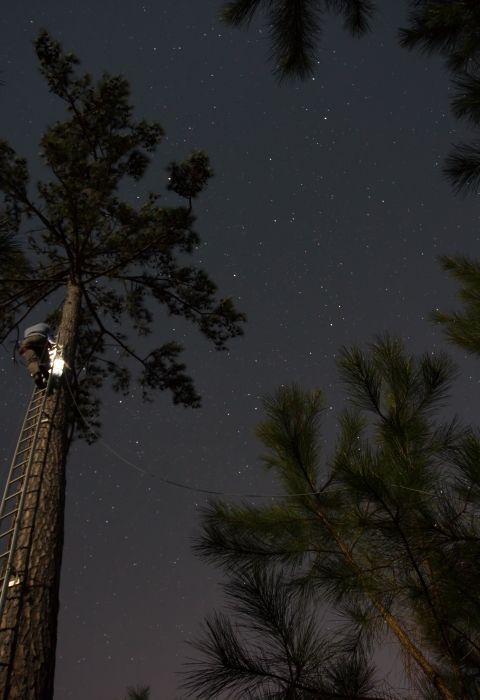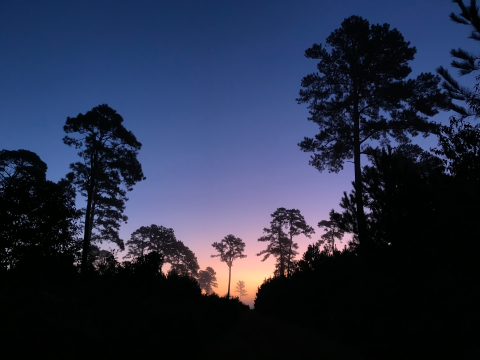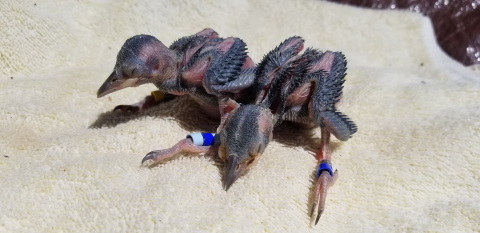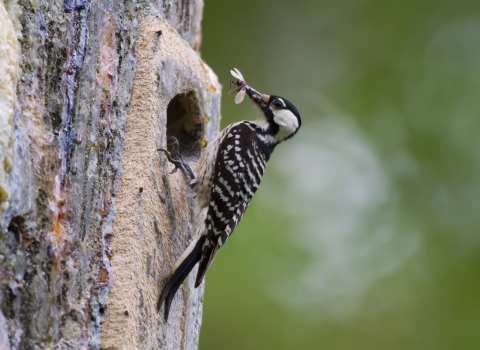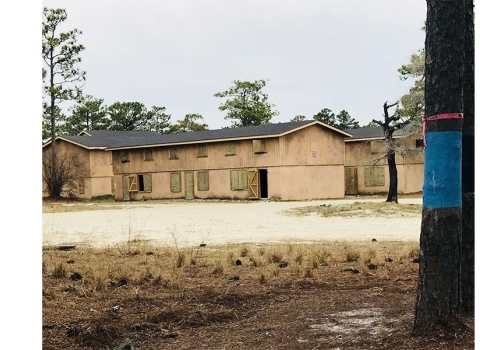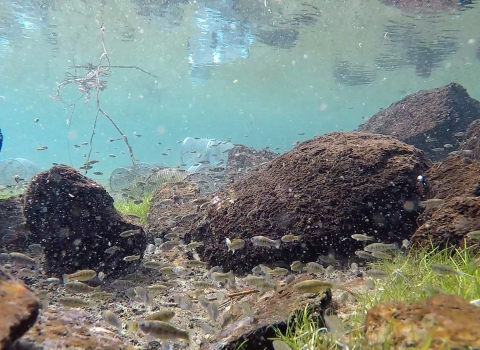Piney Grove Preserve in Virginia is not an island. But 20 years ago, a rare bird was stranded there.
At the time, the 3,200-acre preserve was home to the last two breeding pairs of red-cockaded woodpeckers in the state.
Over decades, most of the state’s old-growth pine forests, which red-cockaded woodpeckers need to survive, had disappeared — removing a bridge to the species’ future. Although the federally protected bird is found in 10 other states in the southeastern and central U.S., Virginia is the farthest north.
“We need to make sure there is good habitat available at the northern end of the species’ range so it can shift in response to climate change climate change
Climate change includes both global warming driven by human-induced emissions of greenhouse gases and the resulting large-scale shifts in weather patterns. Though there have been previous periods of climatic change, since the mid-20th century humans have had an unprecedented impact on Earth's climate system and caused change on a global scale.
Learn more about climate change ,” explained Emma Belling, a biologist for the Virginia Department of Wildlife Resources.
It’s equally important to make sure where there’s good habitat available, birds are using it.
That's why state, nonprofit, university, and federal partners have collaborated for years in Virginia to not only restore the rare habitat the species depends upon, but also reintroduce birds from healthy populations in other parts of its range.
Their work has started to pay off.
Today, the red-cockaded woodpecker is thriving at Piney Grove — now home to 14 breeding pairs — and the species has a foothold at both Great Dismal Swamp National Wildlife Refuge and Big Woods Wildlife Management Area, where Belling recently confirmed the first fledgling from their first breeding pair.
“It took a few years for this pair to successfully reproduce, but we hadn’t expected to see red-cockaded woodpecker here so soon,” Belling said.
The state purchased Big Woods in 2009 with a recovery grant from the U.S. Fish and Wildlife Service. It was a strategic acquisition: Big Woods neighbors Piney Grove.
In 2016, after several years of intensive habitat management, biologists documented the first red-cockaded woodpecker at Big Woods: a male that had been banded at Piney Grove.
Once a last resort for Virginia’s red-cockaded woodpecker, Piney Grove became a lifeline.
A cavity in a niche
To understand the challenge of recovering the red-cockaded woodpecker, it helps to understand the unique niche these birds occupy in nature.
Picture a shrubby plain dotted with pine trees, at least 70 years old and towering so high you have to tilt your head back all the way to see their crowns. High on the trunk, you might also see a cavity.
Red-cockaded woodpeckers depend on big, old pine trees that are susceptible to a fungus that attacks the center of the trunk without killing the tree, making the interior soft while the outside stays hard — like a chocolate bar with a creamy center. The birds peck out that soft wood to create cavities for nesting — the red-cockaded is the only woodpecker that exclusively excavates living trees.
In addition to the right nesting trees, the birds need the right foraging conditions around them: open grasslands that support their prey and make it difficult for their predators to hide.
Historically, those areas would be kept open through natural wildfires, or through controlled burns set by Native Americans to manage the landscape for hunting and other activities. But today, most areas once home to pine savannas have been developed or matured into dense forest.
Piney Grove encompassed a rare remaining pocket of this habitat in Virginia. When The Nature Conservancy acquired the preserve in 1998, it changed the trajectory for the red-cockaded woodpecker in the state.
Catch and release
In 2001, The Nature Conservancy collaborated with the Service to capture juvenile red-cockaded woodpeckers from stable populations in the Carolinas and release them at Piney Grove.
The tactic, known as translocation, requires stealth maneuvers.
During the day, when the birds are out foraging, biologists stake out their cavities, hiding nearby with telescoping poles that have box-like traps at the end. When the birds return in the evening, the biologists place the trap in front of the cavity entrance and tap the tree with a stick — the sound draws the bird out, and into the trap.
With birds in boxes, biologists drive directly to release sites, ascending towering pines on stacking aluminum ladders in the dead of night to place the birds inside cavities. To keep the transplants from flying right out, they tack a screen tied to parachute cord over the opening.
“At sunrise, when it’s time for the birds to exit the cavity to forage, you pull the chord to open the screen,” explained Chance Hines, a wildlife biologist with the Center for Conservation Biology who works on red-cockaded woodpecker recovery in Virginia.
Inevitably, some fly off, never to be seen again. But others will return to their new cavity that evening, making themselves at home.
Branching out
Coupled with intensive habitat management, translocation gave Piney Grove’s red-cockaded woodpecker population a much-needed boost.
But partners knew they couldn’t rely on Piney Grove alone to ensure the persistence of red-cockaded woodpeckers in Virginia in the face of unpredictable natural disasters — like hurricanes, tornadoes and disease outbreaks — that could wipe out this stronghold.
They needed another site in the state that could support a new population. Virginia’s Great Dismal Swamp National Wildlife Refuge, about 50 miles southeast of Piney Grove, had potential.
While the swamp isn’t typical habitat for the species, it is similar to a few other places where the bird occurs. In coastal North Carolina, red-cockaded woodpeckers inhabit an ecosystem called pond pine pocosin. Because that habitat is also present at Great Dismal and red-cockaded woodpeckers were known to occur there in the past, the refuge was a priority site for starting another Virginia population.
To set the stage for birds, refuge staff spent years working with partners to ready enough habitat for them to settle in. In collaboration with biologists from The Nature Conservancy and the Center for Conservation Biology, they created 13 areas in the swamp that can support breeding pairs. Each area, called a recruitment cluster, includes four large pine trees with man-made cavities high on their trunks.
Between 2015 and 2016, 18 juvenile red-cockaded woodpeckers from Carolina Sandhills National Wildlife Refuge and Piney Grove were released at Great Dismal.
Slosh and burn
Sixty birds have now been introduced to the refuge. While the swamp has offered a new space for them to spread their wings, it has presented challenges for the biologists who monitor them.
“We are sloshing through water at least half a mile to get to these sites, carrying everything we need with us,” said Cynthia Morris, a wildlife biologist at Great Dismal.
Biologists regularly check the clusters where birds have been introduced, but, she said, “If they have spread out beyond those places, it’s hard for us to know because of the difficulty of surveying the terrain.” Imagine boot-sucking mud and dense, thorny brush.
What they do know? At least a dozen woodpeckers have settled on the refuge, four pairs have bred, and two pairs have been successful.
The refuge’s short-term goal is to have at least five pairs breeding successfully, but the next step isn’t bringing in more birds — it’s restoring habitat.
“Red maple has come in aggressively, making the vegetation thick and brushy,” explained Susan Stanley, who is also a wildlife biologist at Great Dismal. “We need fire to thin the vegetation to provide better foraging habitat and remove cover for predators.”
For a long time, fire wasn’t an option, in part because of the complexity of burning in areas where the soil is primarily peat, a spongy material composed of decomposing plant materials often found in wetlands. While peat has incredible water-holding capabilities, when it is dry, it is highly flammable — making it dangerous to burn.
Now, thanks to restored hydrology made possible by water-control structures built with Hurricane Sandy resilience funding, and approximately $2 million from the Bipartisan Infrastructure Law Bipartisan Infrastructure Law
The Bipartisan Infrastructure Law (BIL) is a once-in-a-generation investment in the nation’s infrastructure and economic competitiveness. We were directly appropriated $455 million over five years in BIL funds for programs related to the President’s America the Beautiful initiative.
Learn more about Bipartisan Infrastructure Law , the refuge has the resources to optimize habitat for red-cockaded woodpeckers at the swamp using prescribed burns. That’s also good for woodpeckers found elsewhere.
A new lifeline
Like Great Dismal Swamp, Alligator River National Wildlife Refuge in North Carolina encompasses pond pine pocosin where red-cockaded woodpeckers occur.
But they may not be able to hang on there for long. Saltwater intrusion is steadily killing pine trees at the refuge.
“That’s another reason Great Dismal Swamp was chosen for a new population,” Morris explained. “These coastal populations are essential for supporting other populations in the area.”
With climate change accelerating sea-level rise and its consequence for coastal habitats, Great Dismal Swamp may one day be a lifeline too.
